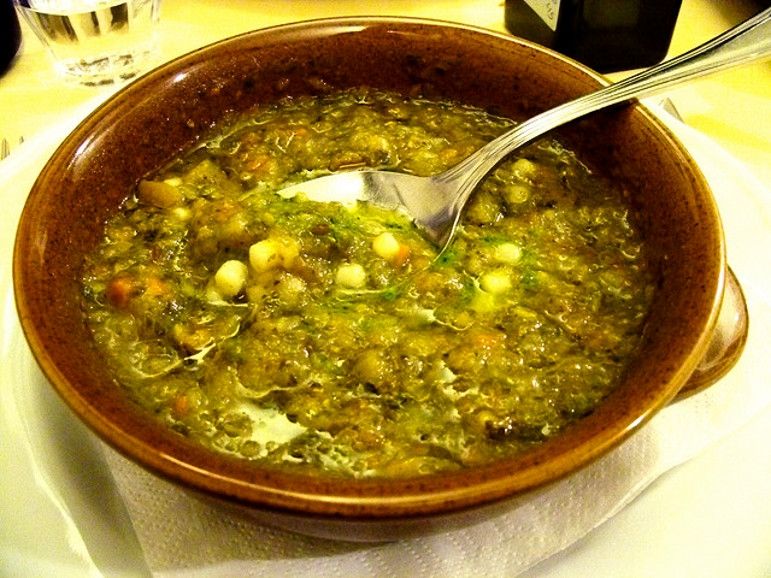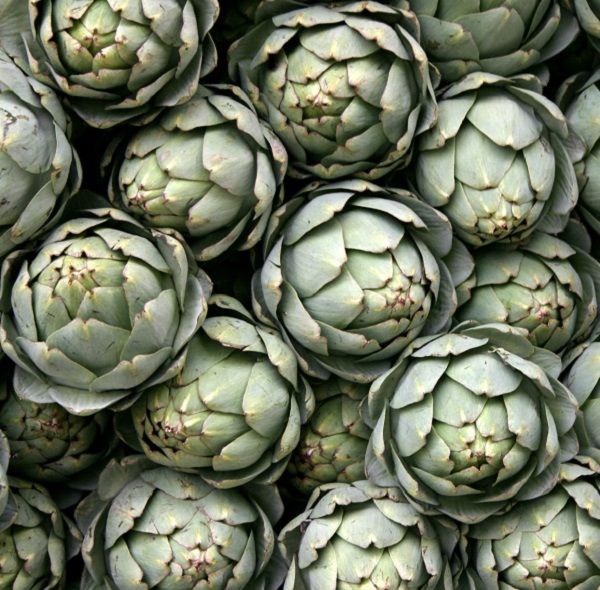The Ligurian Menu to Get Back in Shape After the Holidays

After the holiday feasts, perhaps it’s time to get back in shape. Here’s a special diet to regain fitness after the holidays without sacrificing the taste and flavours of Ligurian specialties!
Epiphany takes away all the holidays, but not the taste and flavour of Ligurian dishes. From savoury to sweet, here are some dishes that can help you lighten up in these days, with delicious preparations that enhance nutritional and detoxifying properties. An idea for your menus with creations not too far from the holidays: dishes that are suitable for those who, while following a more balanced diet, do not want to give up the pleasures of the table.
Minestrone: ‘Poor’ but Good
Ingredients:
– 100g of fresh borlotti beans
– 150g of young green beans
– 3 potatoes
– 2 eggplants
– 200g of pumpkin or zucchini
– 300g of second-season cabbage
– 200g of seasonal vegetables
– 25g of dried mushrooms
– 2 tablespoons of extra virgin olive oil
– 200g of short pasta or rice
– 2 tablespoons of pesto
– Salt
Preparation:
1. Clean all the vegetables and place a pot with salted water on the heat.
2. When the water is boiling, add all the vegetables, which you have already cut into small pieces.
3. Soak the dried mushrooms, squeeze them, chop them, and add them to the soup.
4. Cook over low heat for at least an hour.
5. Then add the pasta or rice and bring to a boil.
6. Remove from the heat and add the diluted pesto.
7. Stir everything and serve. The Minestrone can be accompanied by croutons.

Vegetable Broth: Refined and Rural
The Ligurians have always known how to create tasty and refined dishes with the products they gather from their gardens, enhancing their every property. Cabbage leaves stuffed and served in delicate consommé are an extraordinary testament to the culinary art of our region. A delicate, flavourful dish used on important occasions such as Christmas, New Year’s, weddings, and significant ceremonies. Stuffed with meat, they are called ‘i previ,’ while with vegetable filling, they are called ‘i frati.’ In spring, especially for Easter, lettuce leaves are used instead of savoy cabbage. Light, harmonious, and balanced cuisine that harks back to the great tradition of Ligurian fillings.
Ingredients:
– Savoy cabbage
– Vegetable broth
For the filling:
– Breadcrumbs
– Chopped parsley and garlic
– Marjoram
– Milk
– Egg
– Cheese
– Pine nuts
– Olive oil
– Salt
– Pepper
For the filling, mix the ingredients well, crushing the pine nuts beforehand, binding the mixture with egg and milk.
Blanch the cabbage leaves in boiling water. After draining and carefully spreading the leaves, place the filling. They can be closed like a packet or at the top like a bag. Place them in a pan with water and cook for about 15 minutes over moderate heat. Serve them in a dish with vegetable broth.

Chickpea Flour
A tasty, delicate, and light velouté prepared with fresh seasonal vegetables, bringing the genuineness of the Ligurian garden to the table. Simple to make, it is a healthy meal rich in nutritional and detoxifying properties.
Ingredients:
– Dried chickpeas
– Swiss chard
– Onion
– Dried mushrooms
– Celery
– Carrot
– Rosemary
– Garlic
– Tomato
– Extra virgin olive oil
– Salt
– Pepper
Preparation:
1. Soak the chickpeas in cold water the night before and then discard the water. Soften the dried mushrooms in hot water and keep the liquid.
2. Sauté the onion with celery and carrot, preferably in a terracotta pot with extra virgin olive oil. When they are golden, add the tomato puree and mushrooms for 15 minutes, adding a bit of soaking water.
3. Cut the Swiss chard and add it to the sauté. Finally, add the chickpeas and cook for about 30 minutes. Serve hot.
4. At the end of cooking, before serving, add a drizzle of raw extra virgin olive oil.

The Roots of Chiavari
Resembling long white carrots topped with green leaves, these roots, with their purifying properties and slightly bitter taste, make an excellent side dish with meat dishes.
Particularly sweet and tender, the Chiavari roots are a staple in the Christmas menu. When boiled, they are seasoned with vinegar, oil, garlic, and anchovies, and they accompany boiled capon or roasted turkey. Resembling long white carrots topped with green leaves, these roots, with their purifying properties and slightly bitter taste, make an excellent side dish with meat dishes. In the past, it was the task of women to wash and rub them so that they resulted in the characteristic white colour.
Ingredients:
– 1 or 2 kilogrammes of Chiavari roots
– 2 cloves of garlic
– 200 grams of salted Gulf anchovies
– Vinegar
– Olive oil
Instructions:
1. Scrape and cut the ends of the Chiavari roots. Boil them in plenty of salted water for half an hour or more, depending on their size.
2. Finally, season them with plenty of oil, vinegar, and slices of garlic.
3. Bone and wash the anchovies thoroughly. After cutting them into pieces, add them to the mixture and let them rest for several hours to enhance the flavour.
4. Serve at room temperature.
Note: In the past, the vinegar used was flavoured with crushed fennel.

Artichokes in hell
“The reality of the world presents itself to our eyes as multiple, prickly, with densely layered strata.” “Like an artichoke.” – Italo Calvino
Tasty, simple, and quick to prepare, artichokes in hell are a specialty of Ligurian cuisine. Their name probably comes from the original cooking method: they were cooked in a pan with embers below and above, hence the name ‘in hell.’
Ingredients:
– 4 artichokes
– Garlic from Vessalico
– Parsley
– Taggiasca olive oil
– Salt
– Pepper
Preparation:
1. Take the artichokes, one per person; clean them by removing the thorns and the tougher outer leaves. Cut the bottom so that they can stand upright in the pan.
2. Rinse them under running water, spread the leaves like a flower, and place them in a baking dish.
3. Sprinkle them with a minced mixture of garlic and parsley, add salt and pepper to taste, and a drizzle of Taggiasca olive oil.
4. Pour some water into the pan, add another drizzle of oil, and bake at 180°C for about 30 minutes.

Anchovies: Admiral Style
Marinated in lemon juice, anchovies retain the freshness and authentic taste of freshly caught fish. Excellent as an appetizer, they can also be served as a light and tasty second course, rich and nutritious.
Ingredients:
– Half a kilogramme of local anchovies
– 3 or 4 lemons
– Extra virgin olive oil Colombaia
– Oregano
Preparation:
1. Remove the heads and bones of the anchovies but leave the tails. Wash the anchovies and place them in a baking dish.
2. Cover the anchovies with lemon juice.
3. Keep them in the fridge for at least half a day, making sure to turn them to marinate completely. The anchovies will be “cooked” by the lemon when they appear white.
4. Before serving, drizzle with a thread of olive oil and a sprinkle of oregano.

Sweet cake with Albenga trombetta squash
The dessert that enhances sweetness. The aroma and color of Albenga’s trombetta squash in a unique dessert with an ancient and traditional fragrance.
Ingredients:
For the pastry:
– 250g of type “0” flour
– 130g of water
– 10 grams of oil
– Passito Pigato from the Ligurian Riviera di Ponente
– A pinch of salt
For the filling:
– 1kg of Albenga trombetta squash
– 300g of raisins
– 100g of pine nuts
– Sugar
Preparation:
1. Knead all the elements and roll out a round pastry that can cover the baking pan.
2. Boil the squash for about 10 minutes until it softens. Drain it well and make sure to remove excess water. Soak the raisins in the Passito Pigato from the Ligurian Riviera di Ponente.
3. Take the perfectly dry squash, add the softened raisins, a few tablespoons of sugar, and the pine nuts, and mix everything.
4. Roll out the pastry and place it on a baking pan. Pour the squash mixture onto the pastry, drizzle with a bit of olive oil, and bake at 220 degrees Celsius. Bake for about 40 minutes.



